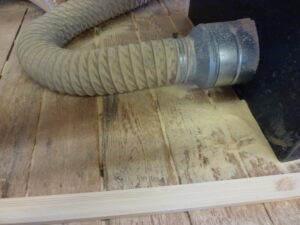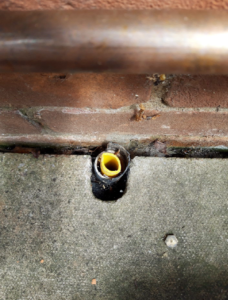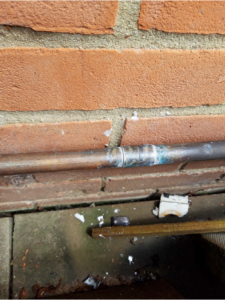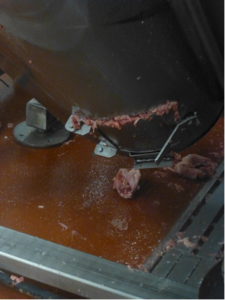Construction Company fined after serious injury to 16-year-old on work experience
A 16-year-old boy suffered serious injuries after becoming trapped under a tractor while on paid work experience.
 Tom Cutler was gaining experience of vehicle repair work at Earlcoate Construction & Plant Hire Limited, Folds Farm, in the New Forest, ahead of hopefully starting a vehicle maintenance course at Sparsholt College.
Tom Cutler was gaining experience of vehicle repair work at Earlcoate Construction & Plant Hire Limited, Folds Farm, in the New Forest, ahead of hopefully starting a vehicle maintenance course at Sparsholt College.
On August 3, 2021, the teenager from the New Forest was driving a tractor down an incline when it came off the track and overturned. He was alone and the tractor did not have a seat belt fitted. Tom was thrown out of his seat and his upper leg was trapped under the roof of the tractor – fortunately he was found in time by passers-by who were able to call for assistance. Emergency services attended and he was taken to hospital for treatment.
Tom’s dad, David Cutler, said: “Tom was only 16 when this incident happened, and it’s changed his life forever.
“Had it not been for his own bravery and the amazing work by the emergency services we could have lost him.
“Tom acted quickly and used his belt as a tourniquet to stem bleeding; he punched out the cab window to check his leg and managed to break off a wing mirror to enable him to turn off the tractor and prevent a fire from fuel that was escaping.
“He spent a month in hospital and has undergone seven different operations but can’t do the things he used to do. He was a keen mountain biker and cricket player but that has all stopped.
“He doesn’t sleep properly and is more anxious; he had to put his education on hold for a year and we as a whole family have found it extremely tough.”
An investigation by the Health and Safety Executive (HSE) found that Earlcoate Construction & Plant Hire Limited, had failed to adequately protect Tom through a failure of supervision, and by not providing adequate information, instruction, and training to him.
HSE has guidance regarding younger workers and providing information, training and supervision.
At Southampton Magistrates’ Court on 16 October, Earlcoate Construction & Plant Hire Limited of Folds Farm, Fordingbridge, New Forest pleaded guilty to breaching Regulation 2(1) of the Health and Safety At Work Act 1974. The company was ordered to pay a fine of £50,000 and costs of £9,223.
After the hearing, HSE Inspector Nicola Pinckney said: “Tom is lucky the outcome was not worse. This was due to his quick thinking, the fact he was found by in time by passers-by and the outstanding work carried out by the emergency services and those in hospital providing his care.
“The incident could so easily have been avoided by understanding the risks involved with employing young people. This could have been achieved by carrying out a suitable risk assessment and putting in place appropriate information, instruction, and training to both Tom and those working with him, and most importantly, ensuring adequate supervision was in place to ensure correct control measures and safe working practices were implemented.
“Companies should be aware that HSE will not hesitate to take appropriate enforcement action against those that fall below the required standards.”
This HSE prosecution was supported by HSE enforcement lawyer Samantha Wells.
Notes to Editors:
- The Health and Safety Executive (HSE) is Britain’s national regulator for workplace health and safety. We prevent work-related death, injury and ill health through regulatory actions that range from influencing behaviours across whole industry sectors through to targeted interventions on individual businesses. These activities are supported by globally recognised scientific expertise.
- More information about the legislation referred to in this case is available.
- Further details on the latest HSE news releases is available.




